If you go to the nearest auto shop and ask the guy at the counter – how much to lift a Jeep – the price will depend on what kind of kit you’re after. We’ve got leveling, body, and suspension kits. So, which one will be a better choice for you? And, more importantly, what’s the average cost of a lift? Will you have to break your bank to get it?
For an amateur Jeep driver, it can be quite a challenge to find the answers on their own. That’s why I decided to make this guide: to help you figure things out. First, we’ll start by learning the benefits of lifting your Jeep. Next, we’ll check out the most common lift types and see how much they’re gonna cost you. Let’s get to it!
Why Would I Lift a Jeep Wrangler?
This is the most important question that you gotta answer before investing in any kits. So, why should you even consider lifting the Jeep? What benefits would that bring? Here’s a quick look at the top three reasons:
-
To install larger wheels. Although the Wrangler is an off-road-ready SUV, it won’t be able to accommodate big tires unless you lift it. Yep, it’s really simple: you need to make room for the larger wheels, and a lift kit will help you do that. The actual lift height will be dictated by the size of the wheels, of course. You can go for a very modest lift (0.5 inches) or change the Jeep’s appearance completely and lift it by 5-7 inches.
For conquering the wilderness, a 1.5-5-inch lift should be more than enough. Right now, 37-inch-tires are the most popular choice for beginner off-roaders. For that, a 3-inch lift will be exactly what the doc ordered. A set of 40-inch wheels, in turn, might require 5, or even 6 inches of lift.
-
To improve the ride quality. The factory Jeep suspension systems are pretty decent and can take on the most demanding terrain. However, there’s always room for perfection. So, if you invest in a solid-quality suspension kit, you’ll instantly see the improvements. The steering-handling will become more precise and you’ll feel more in control. Sadly, this won’t be possible with a leveling or a body kit.
Why is that, exactly? Well, these kits (we’ll talk more about them soon) don’t include any expensive gear like control arms, sway bars, coils, springs, or steering stabilizers.
-
To make the Jeep look more aggressive. We all want our steel horses to impress fellow off-roaders, don’t we? And a lift kit is one of the cheapest and most effective ways to do that. By lifting the Jeep, you’ll make it look more masculine, ready-steady, and “expensive”. Don’t overdo it, though, because, say, a 10-inch lift will probably look a bit strange unless you’re a big fan of mud racing.
Different Lift Types, Different Prices
Alright, now that we’ve figured out what a lift can bring to the table, let’s check out the available lift kits. Now, while there are dozens, if not hundreds of different brands out there, essentially, there are three lift types – leveling, body, and suspension. Which one is gonna cost you more? What do these different kits include? Read on to find out!
Leveling Kits – the Cheapest Option
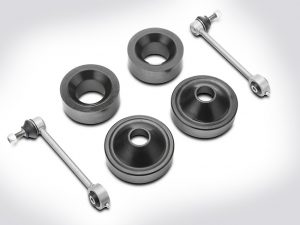
Otherwise, you won’t be able to install new tires. A leveling kit is cheap because it only includes a set of spacers for slightly lifting the front, nothing more. You can get a very decent pack of front spacers for as little as $100. But, if you want to lift the front by more than a couple of inches, that’s gonna cost you +/- 150 bucks. The labor cost is usually 50-60% of the kit’s price. That equals $200-240 for a premium-quality leveling kit + the installation.
Body Lift Kits – the Golden Middle
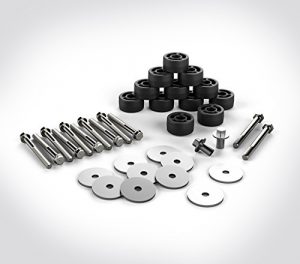
While body lift kits will be more suitable for drivers with at least some experience in upgrades/customization, they won’t take much effort to install. If you’ve got some basic tools and know your way around the Jeep, you’ll be done in 4-5 hours. In my experience, $250-300 body kits are the best option. The labor cost is roughly the same as with leveling kits.
Does lifting a Jeep cause problems? While body lifts do alter some angles and geometry, properly installed mid-range lifts provide a good compromise between clearance and potential issues. For most casual off-roaders, a 2-3 inch body lift hits the sweet spot before you start experiencing major drawbacks.
Suspension Kits – A Premium Option
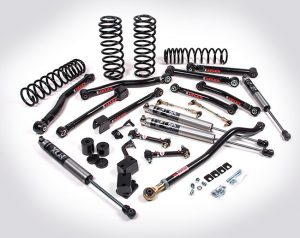
On the downside – suspension kits require mechanical-grade skills to install properly. So, unless you’re 100% sure you can pull this off, it would be best to pay an auto shop to handle everything. What’s that gonna cost you, though? A lot, actually. A decent-quality kit starts at $1K, with 2K being the average price. Professional installation won’t be cheap, either (70-80% of the gear cost).

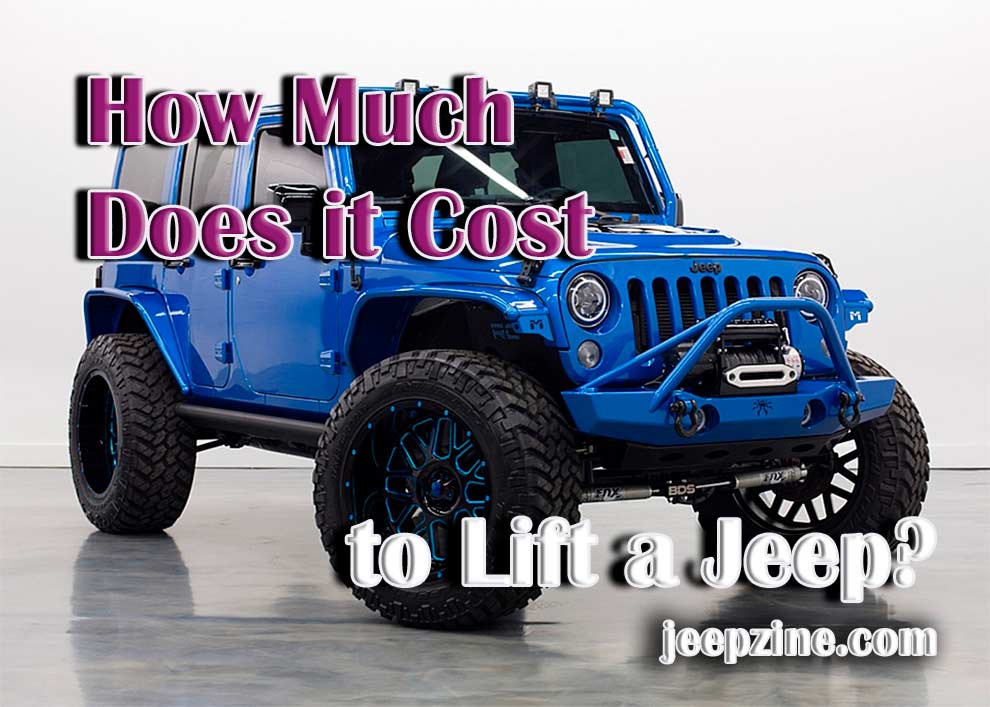
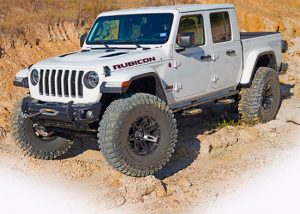 To install larger wheels. Although the Wrangler is an off-road-ready SUV, it won’t be able to accommodate big tires unless you lift it. Yep, it’s really simple: you need to make room for the larger wheels, and a
To install larger wheels. Although the Wrangler is an off-road-ready SUV, it won’t be able to accommodate big tires unless you lift it. Yep, it’s really simple: you need to make room for the larger wheels, and a
Add Comment